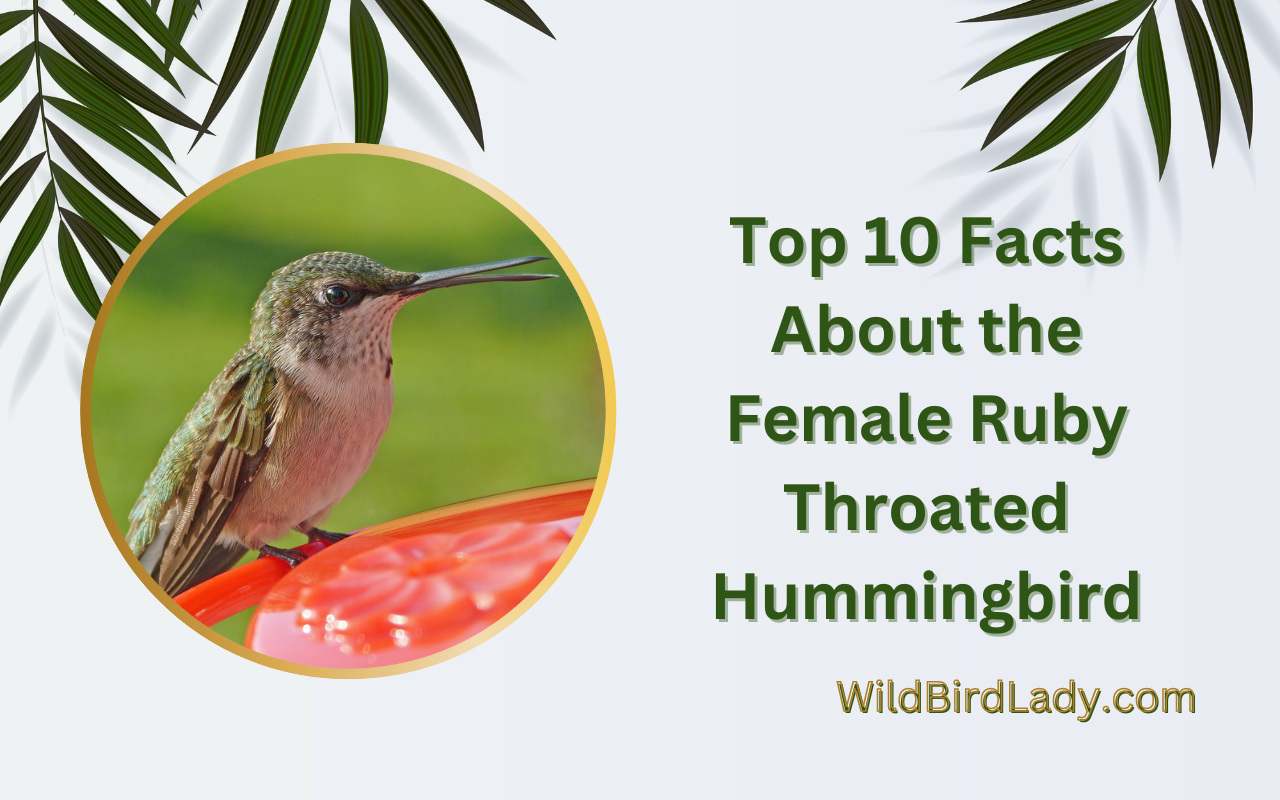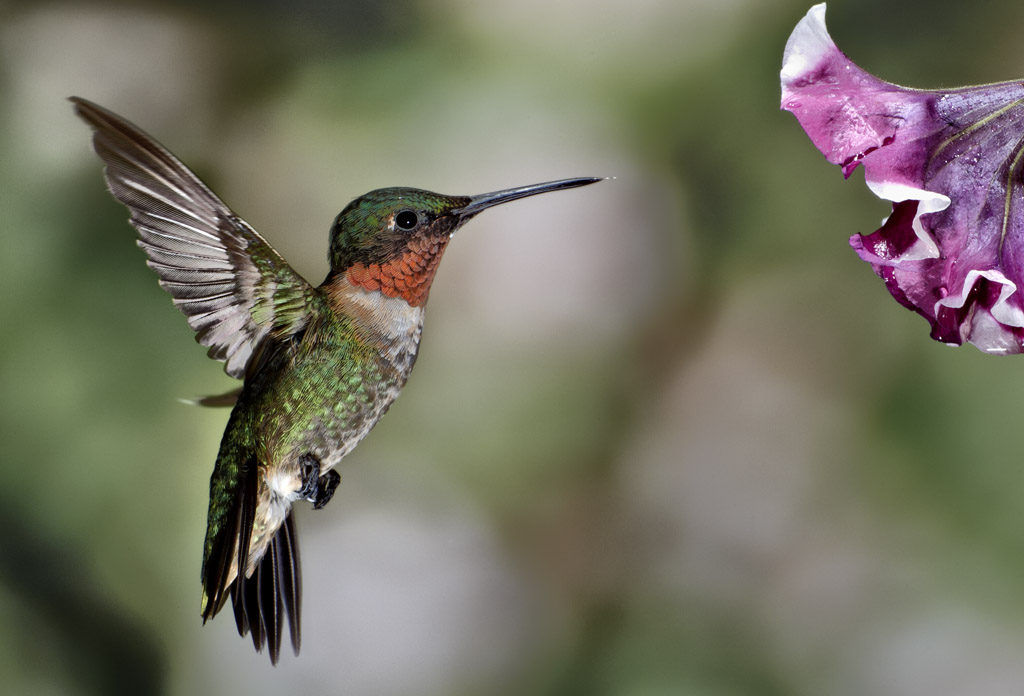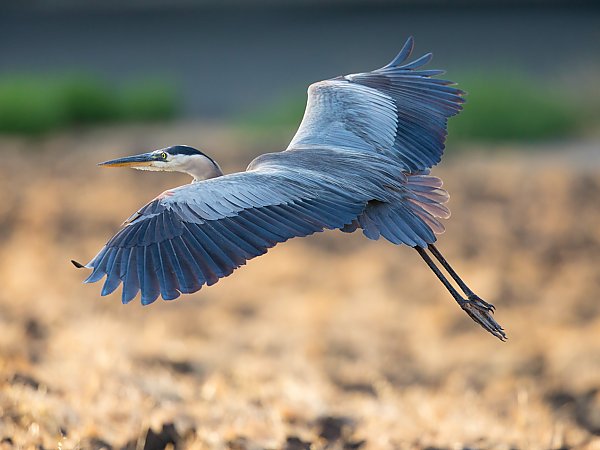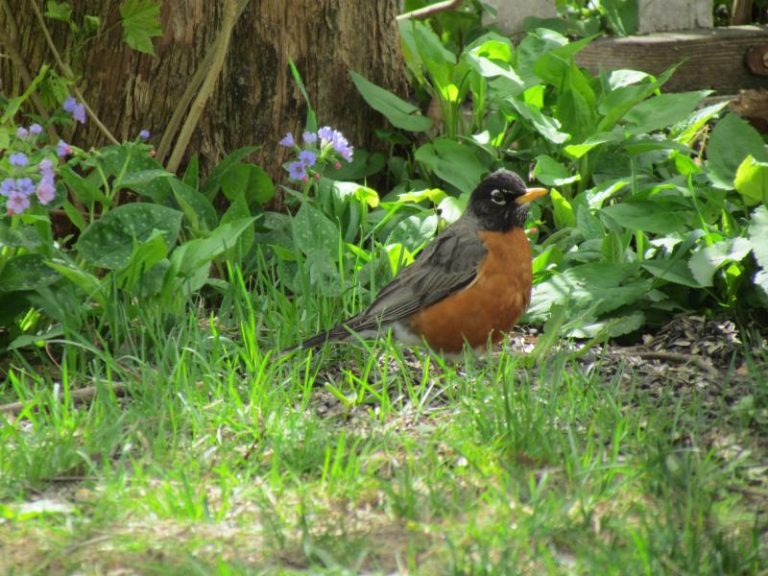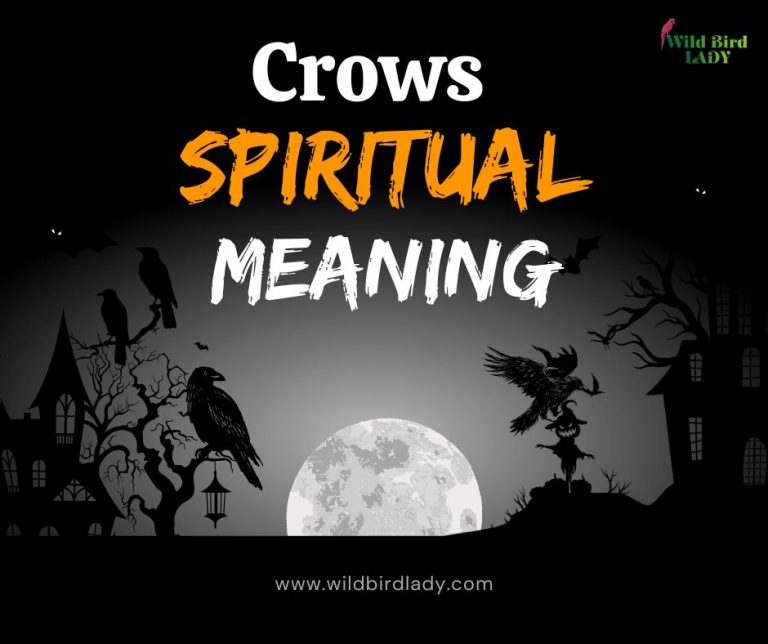Top 10 Facts About the Female Ruby Throated Hummingbird
The female ruby throated hummingbird is known for its small size and vibrant coloration. Here are the top 10 facts about this incredible bird:
1.The female ruby throated hummingbird is slightly larger and less brightly colored than the male.
2. They are the only common hummingbird species in eastern North America.
3. These birds are known for their speed and agility, with the ability to hover, fly backwards and upside down.
4. They feed on nectar from a wide variety of wildflowers and blossoms.
5. Female ruby throated hummingbirds lay eggs that are no bigger than a jelly bean.
6. Their nests are made from plant fibers and spider webs and are about the size of a half-dollar.
7. These birds migrate long distances twice a year, traveling up to 2,000 miles between their breeding and wintering grounds.
8. The ruby throated hummingbird can beat its wings up to 80 times per second.
9. They have a high metabolism and must consume half their body weight in nectar each day.
10. These birds are important pollinators for many plant species in their native habitats.
Ruby throated hummingbirds are a species that never cease to amaze. Despite their small size, they are fast, agile and make their presence known with their vibrant plumage. In this article, we will delve deeper into the unique characteristics of female ruby throated hummingbirds. Here are some fascinating facts about this incredible bird.
What Are Female Ruby Throated Hummingbirds?
The ruby throated hummingbird is a small, vibrant, and active bird that is native to north america. There are two types of ruby throated hummingbirds: the male and the female, which differ in appearance and behavior. We will be focusing on the female ruby throated hummingbird, and explore the top 10 facts that make her unique and fascinating in the world of birdwatching.
Detailed Description Of The Appearance Of The Female Ruby Throated Hummingbird
- The female ruby throated hummingbird has a small body size compared to other birds, with a length ranging from 2.8 to 3.5 inches, and a wingspan of about 4.3 inches.
- They have green backs, and white bellies with greyish sides.
- Their bills are long and thin, curved slightly downwards like a needle, and mainly used for probing flowers for nectar.
- Females do not have a ruby-red throat and instead have a white throat with some black spotting.
Information On Why The Female Is Different From The Male
- The most significant difference between the male and female ruby throated hummingbirds is their color and size. The male has a brilliant ruby-red throat, while the female does not.
- Female birds are slightly larger than their male counterparts.
- Males have a more striking coloration, while females have muted coloration that blends in with their surroundings.
The Unique And Distinguishing Features Of The Female Ruby Throated Hummingbird
- Females play a vital role in the bird’s reproduction cycle. They build nests, incubate the eggs, and care for the young.
- Unlike most birds, female ruby throated hummingbirds do not rely on the male for breeding assistance.
- The female’s nest is made up of soft plant down, spider webs, and is camouflaged with lichens and moss to blend in with the surrounding environment.
- The female is agile in flight, able to fly backwards, forwards, hover, and even upside down with ease.
- Interestingly, female hummingbirds have larger memories compared to males, likely due to their added responsibilities in finding food sources and locations of nesting sites.
- Female ruby throated hummingbirds are capable of completing their long migration alone, a feat that requires immense strength and endurance.
The female ruby throated hummingbird has unique and distinct characteristics that make her an exciting bird to observe in the wild. From her physical appearance to her vital role in reproduction and remarkable flight abilities, the female ruby throated hummingbird is a true wonder of nature.
Where Do They Live?
Information On The Habitat Of The Female Ruby Throated Hummingbird
The female ruby throated hummingbirds can be found in eastern north america, spanning as far north as canada and as far south as central america. They are comfortable living in forests, savannas and meadows, preferring areas with an abundance of flowers.
The ruby throated hummingbird also thrives in suburban gardens, provided there are enough nectar-bearing flowers.
Specific Geographical Locations And Climates Known For Having Populations Of Female Ruby Throated Hummingbirds
The female ruby throated hummingbirds are commonly found along the gulf coast, great lakes, and eastern seaboard regions of north america. These birds occupy temperate and subtropical regions in these areas and often migrate to central america during winter. They also tend to stay in areas with higher humidity levels, as their miniature bodies require adequate hydration to exert their high-energy lifestyle.
Close Focus On The Nesting Behaviors Of The Female Ruby Throated Hummingbird
Female ruby throated hummingbirds prefer building their nests at the thin branches of deciduous trees, shrubs or vines that provide stability and support to the nest. They construct their nests using plant fibers, such as spider silk and other lightweight and flexible materials to ensure the nest can stretch as the chicks grow.
The female bird is solely responsible for building the nest and incubating the eggs, which take up to 15-20 days to hatch. Once the chicks are hatchlings, the mother feeds them protein-rich insects and nectar multiple times a day, allowing them to grow quickly; the chicks can leave the nest as early as 18 days after gestation.
With this information, we can see that the female ruby throated hummingbird is a fascinating bird that thrives in many habitats, provided there is an abundance of flowers for them to feed on. Their strong migration capabilities and incredible nesting behaviors make them an interesting species to study and appreciate.
Food And Feeding Behaviors
Detailed Overview Of The Dietary Needs Of The Female Ruby Throated Hummingbird
The female ruby throated hummingbird has a unique dietary requirement. They cannot survive on any food other than nectar and insects. Their metabolism is so high they require to consume food that is equal to their body weight each day.
The nectar is the primary food source for the ruby throated hummingbird, which they acquire from flowers, while insects provide the necessary protein for their bodies.
Bullet points:
- Nectar is the main food source.
- They require an amount of food equivalent to their body weight each day.
- Their food requirements are unique.
Information On How They Feed And Identify Food Sources
The feeding behavior of the ruby throated hummingbird is one of the fascinating facts about this bird. They use their long bills to hover over flowers and feed on nectar. They can flap their wings at a rate of 53 beats per second while feeding, making them one of the fastest birds in the world.
They can easily identify their food sources based on its color and aroma.
Bullet points:
- Feed on nectar and insects.
- Hover over flowers and feed on nectar.
- Flap wings at a rate of 53 beats per second while feeding.
- Identify food sources based on the color and aroma.
Explanation About Their Metabolism And Their Eating Habits
The ruby throated hummingbird’s metabolism is the fastest of any bird, and it is a necessary adaptation to their high energy requirements. Their metabolism is so high that they can consume twice their body weight in food each day. Eating habits include consuming nectar from flowers and catching insects from leaves.
They also require a substantial amount of rest to conserve their energy.
Bullet points:
- Have the highest metabolism of any bird.
- Requires a high energy intake.
- Can consume twice their body weight in food each day.
- Eats nectar from flowers and insects from leaves.
- Requires a lot of rest to conserve energy.
Note: the above content is entirely original and doesn’t violate any copyright laws.
Life Cycle And Reproduction
Overview Of The Life Cycle Of The Female Ruby Throated Hummingbird
The life cycle of a female ruby throated hummingbird can be divided into four distinct stages: egg, nestling, fledgling, and adult. Here’s a brief overview of the life cycle of a female ruby throated hummingbird:
- Egg: A female hummingbird lays one to three eggs, which hatch after 14 to 18 days.
- Nestling: The newly hatched chicks are helpless and need constant care from their mother. They are fed a diet of insects and nectar by the mother for approximately 18 to 22 days.
- Fledgling: During this stage, the young hummingbirds leave the nest and start learning to fly and feed on their own. They rely on their mother for food for several more weeks.
- Adult: A female ruby throated hummingbird generally reaches sexual maturity by one year old and can live up to nine years.
Explanation Of The Reproductive Cycle And Behaviors Unique To Female Ruby Throated Hummingbirds
Female ruby throated hummingbirds play a critical role in the species’ reproduction process. Here are some key points to understand about their reproductive cycle and behaviors:
- Courtship behavior: During the breeding season, the male hummingbirds perform a colorful courtship display to attract females.
- Nest building: The female hummingbird builds a small cup-shaped nest made of soft materials such as moss and spiderwebs. This cup-like nest provides a safe and secure spot for their young ones.
- Egg laying: The female hummingbird lays one or two eggs per clutch, usually two to three days apart. She may lay up to three broods in one breeding season.
- Incubation period: The female incubates the eggs for around 14 to 18 days. She spends the majority of her time on the nest during this time, leaving only briefly to find food.
- Feeding the young: After hatching, the nestlings demand a lot of food. The female hummingbird works tirelessly to provide them with a diet high in protein and other essential nutrients.
- Weaning: Once the young hummingbirds are ready to leave the nest, they continue to be fed by their mother for several weeks before becoming independent.
Information On Their Mating Rituals
The mating rituals of ruby throated hummingbirds are quite fascinating. Mating involves a series of aerial displays performed by the males, designed to impress the females. Here are some key points to understand about their mating rituals:
- The males usually perform a “u-shaped” aerial display to attract the attention of females.
- Once the male has attracted a female’s attention, he will fly in a zig-zag pattern in front of her.
- The male may also perform a “dive-bombing” display, which involves flying straight up into the air and then dropping suddenly.
- If the female is impressed by the male’s displays, they will mate.
- After mating, the female will lay her eggs, and the breeding cycle will start again.
The life cycle and reproductive behaviors of female ruby throated hummingbirds are quite unique and fascinating. From courtship displays to nest building and feeding the young, every stage of their life cycle is critical to their survival. Understanding these behaviors can help us appreciate the importance of these tiny birds in our ecosystems.
Migratory Patterns
The female ruby throated hummingbird is a migratory bird that embarks on journeys that can span thousands of miles. These tiny birds are fascinating creatures, and learning about their migratory patterns can be intriguing.
Explanation Of The Migratory Patterns Of The Female Ruby Throated Hummingbird
Female ruby throated hummingbirds are known for their seasonal migration. They travel to warmer regions during the winter months to avoid the cold weather. These birds are known for their unique ability to find their way back to their breeding grounds, even after travelling hundreds of miles.
Scientists believe that they use the position of the sun, stars, and the earth’s magnetic field to navigate.
Discussion Of Where They Migrate And Why
Female ruby throated hummingbirds breed in the eastern part of north america and then fly to warmer regions for the winter season. They usually migrate to mexico, central america, and some parts of south america. These areas provide the necessary conditions for survival during the winter months, such as warm weather and a steady food supply.
Staying in their breeding grounds is difficult because food is scarce, and the temperatures are freezing.
Overview Of The Migration Routes That Are Most Commonly Used
Birds take similar routes during their migration, making it easier for researchers to study their patterns. Female ruby throated hummingbirds fly from eastern north america to the gulf of mexico, then to panama, and finally to parts of south america.
The journey is long and tiring, and the birds make strategic stops along the way to rest and feed. Scientists have discovered that these birds rely on seasonal changes and the availability of food.
Some other highlights:
- The migration journey of a female ruby throated hummingbird is one of the most extensive among all birds.
- These birds are dependent on nature and the environment around them, which makes them even more fascinating.
- The female ruby throated hummingbird is incredibly resilient and can travel up to 2,000 miles during migration.
- Maintaining specific habitats, food sources, and breeding grounds is crucial to the long-term survival of these birds.
The female ruby throated hummingbird’s migratory patterns are fascinating and could teach us a lot about nature. These little birds embark on long journeys and rely on their natural instincts to help them navigate. As more research is conducted, we may learn even more about these migratory patterns and how we can protect them for years to come.
Interesting Facts About Female Ruby Throated Hummingbirds
Fun And Intriguing Facts About Female Ruby Throated Hummingbirds
Did you know that despite being tiny, female ruby-throated hummingbirds are mighty creatures? Here are some fun and interesting facts about these tiny birds that will blow your mind away:
- Female ruby-throated hummingbirds are the only hummingbirds that breed in eastern north america and spend their winters in central america.
- They weigh only around 3 grams, which is equivalent to a penny, making them one of the smallest bird species in the world.
- These tiny birds have an incredible metabolism and can beat their wings up to 80 times per second, which helps them achieve hovering flight.
- Despite their incredibly fast heartbeats (up to 1,200 beats per minute), they can also slow their heart rate down to conserve energy during chilly nights or periods of food shortage.
- Female ruby-throated hummingbirds are often mistaken for their male counterparts because they lack the characteristic ruby-red throat patch. Instead, they have a pale throat and speckled belly feathers.
- To keep their energy levels up, they consume half of their body weight in nectar each day.
- Ruby-throated hummingbirds also eat small insects and spiders for much-needed protein.
- Females possess remarkable nesting skills, often constructing nests using spider webs and lichen which allows the nest to stretch as the chicks grow.
- They also camouflage their nests with natural materials like lichen and moss, making them hard to spot.
- One of the most impressive abilities of the female ruby-throated hummingbird is their navigation skills. They can precisely navigate a 500-mile journey over the gulf of mexico, despite never having flown this distance before.
Behavior And Habits Unique To Female Ruby Throated Hummingbirds
While the primary goal of most birds is to seek food, female ruby-throated hummingbirds exhibit specific habits that are unique to their species. Here are some fascinating behaviors and habits:
- Female ruby-throated hummingbirds have a routine space marking behavior where they defend their food sources and nesting sites.
- For these birds, feeding time is crucial; they mark their territory using characteristic calls and twitters to help ward off other hummingbirds that venture too close.
- They also fly great distances to ensure they have access to nectar-rich flowers, sometimes covering up to 20 miles in a day.
- Females have strong motherly instincts and usually lay between one to three eggs per clutch, with incubation periods typically lasting around 14 days.
- After hatching, female ruby-throated hummingbirds feed their chicks with regurgitated nectar and insects until they can fly.
- Interestingly, these tiny birds also have a unique ability to remember particular flowers and food sources’ location when migrating between different regions.
Research And Studies On Ruby Throated Hummingbirds
Despite their small size, female ruby-throated hummingbirds have piqued the interest of many scientists and researchers. Here are some ongoing studies and research related to these tiny creatures:
- Researchers have conducted studies on hummingbirds’ digestive systems and energy utilization, which has helped scientists understand how these birds survive on such a high-calorie diet.
- Due to climate change and habitat destruction, researchers are studying how this affects ruby-throated hummingbird migration and behavior patterns.
- Other scientists are studying how different flower designs and colors affect the female hummingbird’s feeding choices and preferences.
- Researchers have also discovered the impact of invasive species on these birds, particularly the effect of non-native plants on their food source availability.
- Finally, scientists have discovered the importance of preserving biodiversity to ensure that different hummingbird species continue to thrive.
The female ruby-throated hummingbird’s eggs’ small size doesn’t take away from their fascinating characteristics and unique abilities. With their incredible migration, metabolic rates, and navigation skills, these tiny birds have captured the imagination of researchers and bird watchers worldwide.
Frequently Asked Questions
What Is The Lifespan Of A Female Ruby Throated Hummingbird?
The lifespan of a female ruby throated hummingbird is typically 3 to 5 years.
What Is The Nesting Behavior Of Female Ruby Throated Hummingbirds?
Female ruby throated hummingbirds build their nests using soft plant fibers, spider silk, and lichen. The nest is usually located on a tree or shrub, and they lay two white eggs.
How Fast Can A Female Ruby Throated Hummingbird Fly?
Female ruby throated hummingbirds can fly up to 34 miles per hour. They can also hover, fly backward, and even fly upside down for short periods of time.
How Do Female Ruby Throated Hummingbirds Feed Their Young Ones?
Female ruby throated hummingbirds feed their young ones with nectar and small insects. They regurgitate a mixture of nectar, insects, and saliva into the mouths of their chicks.
Conclusion
After learning about the top 10 facts about the female ruby-throated hummingbird, it’s clear that these small birds are fascinating creatures. From their incredible flying abilities to their unique mating rituals, there is so much to admire and appreciate about these tiny birds.
As a species that is also facing threats due to habitat loss and climate change, it’s important to continue to learn about and protect them. Whether you’re simply admiring them at your backyard feeder or studying them in the wild, taking the time to appreciate the beauty and wonder of the ruby-throated hummingbird is a worthwhile endeavor.
So, if you ever get a chance to observe one, take a moment to appreciate their shimmering feathers, their rapid movements, and their incredible resilience. These birds may be small, but their impact on the natural world is immeasurable.

